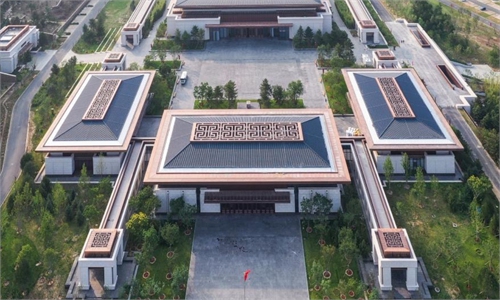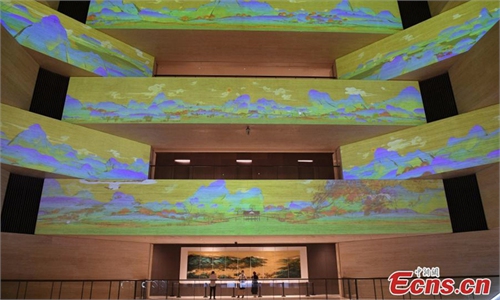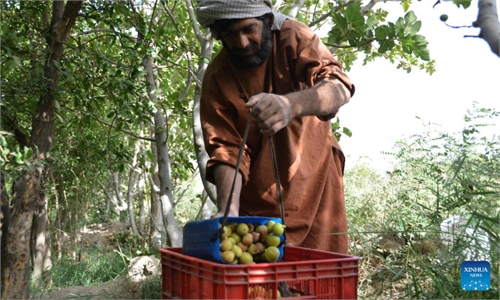ARTS / CULTURE & LEISURE
Former director of Taipei Palace Museum worries about future of artifacts under DPP control
Testimony of one family
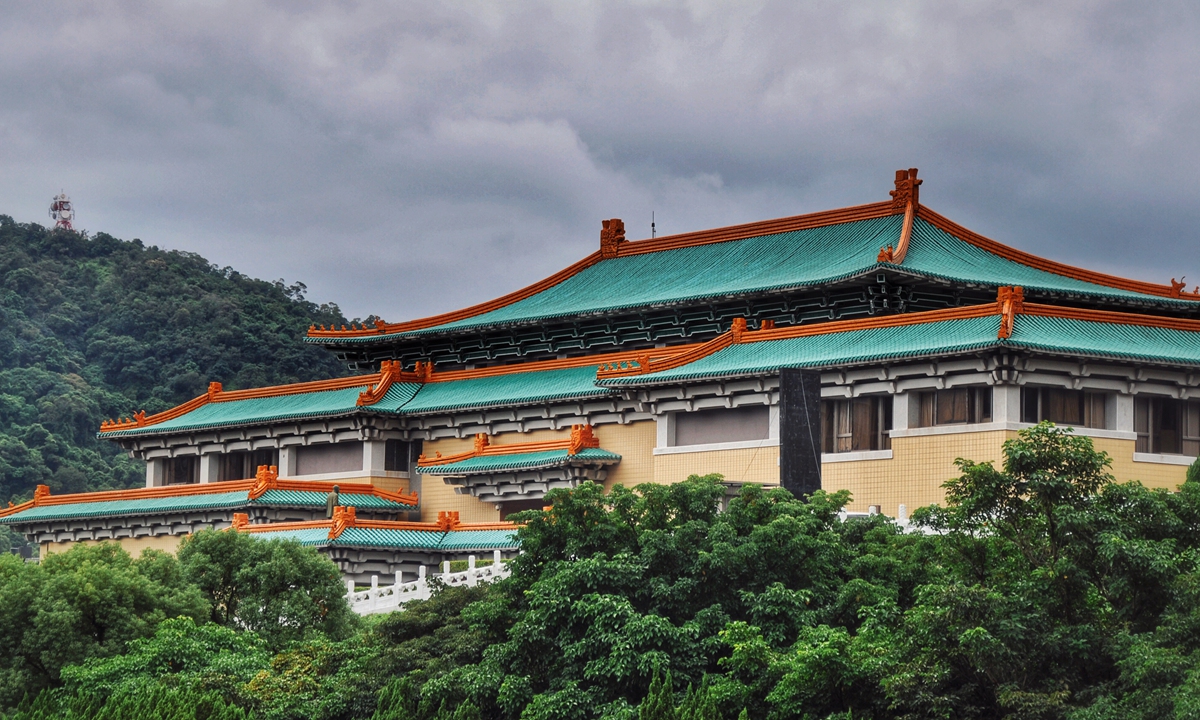
The Taipei Palace Museum Photo: VCG The famous Jadeite Cabbage on display at the Taipei Palace Museum. Photo: VCG
The steep escalation of tensions across the Taiwan Straits as a result of US House Speaker Nancy Pelosi's provocative visit to the island brought about the improper handling of artifacts by officials at the Palace Museum in Taipei, which houses one of the world's most exquisite collections of Chinese artifacts transported from the Chinese mainland.
In July, the officials of the top museum on the island held its first ever "wartime response exercise," and asserted they could only save 90,000 of all the 700,000 artifacts in the collection in the case of an armed conflict. However, such hyping of military threat gave rise to speculations in the media that these Chinese national treasures could be "relocated to the US or Japan" for "protection" in the case of armed conflicts, which drew widespread criticism on the internet.
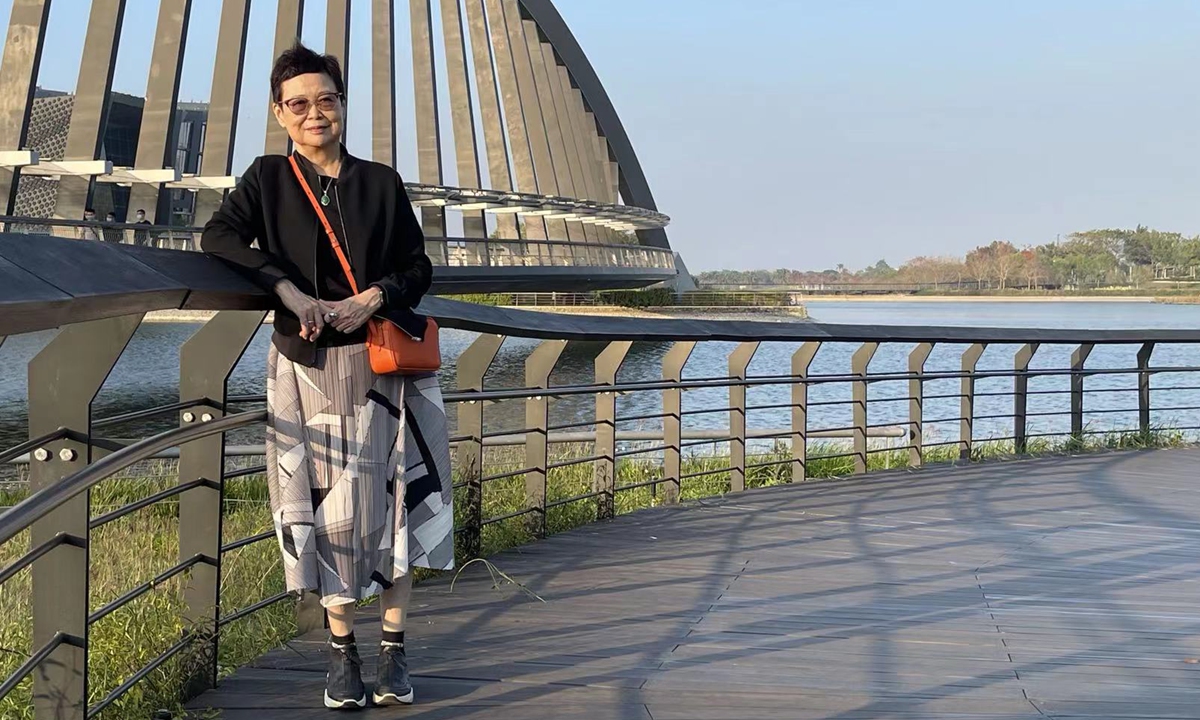
Fung Ming Chu Photo: Courtesy of Fung Ming Chu
Fung Ming Chu, former director of the Taipei Palace Museum from September 2012 to May 2016 and now a historian, told the Global Times in an exclusive interview that the "exercise" carried out by the management of the museum, which is in line with the ideas of the secessionist Democratic Progressive Party (DPP) authority, was both "amateurish and ill-intentioned."Fung emphasized that both sides of the Taiwan Straits share the same cultural roots, and although the DPP is trying to erase the imprint of traditional Chinese culture on the island, the vitality that has been passed down from generation to generation is still strong and popular.
De-sinicization push
Museum officials said in July that in the case of armed conflict, it is unlikely that all 700,000 artifacts at the museum will be relocated and that they would only save around 90,000 priority artifacts, according to a report from CNN.
Fung said she questioned the museum's public promotion of the drill at a time of heightened cross-Straits tensions.
Recalling her 38 years of work experience at the Taipei Palace Museum, she said the museum has conducted drills against irregular fire, natural disaster, terrorist attack and explosion, as most museums do. "But most of the drills are confidential, why make it public this time?" she asked.
Fung said that in the event of a war, the warehouse at the museum is safe enough.
According to media reports, since the DPP came to power in 2016, it has continued trying to push organizational reform of the Taipei Palace Museum, wanting to downgrade it from falling directly under "Executive Yuan" to subordinate to the cultural authority. This move has been seen as a major deployment by the DPP authorities to push forward de-sinicization.
Fung noted that the Taipei Palace Museum is currently subject to multiple institutional oversight, and the "downgrade" would result in it being endangered and directly dominated by a single cultural authority that could make unilateral decisions.
"Every once in a while, this kind of argument pops up, causing people who really care about the museum to worry about its future," she said.
Born of the same root
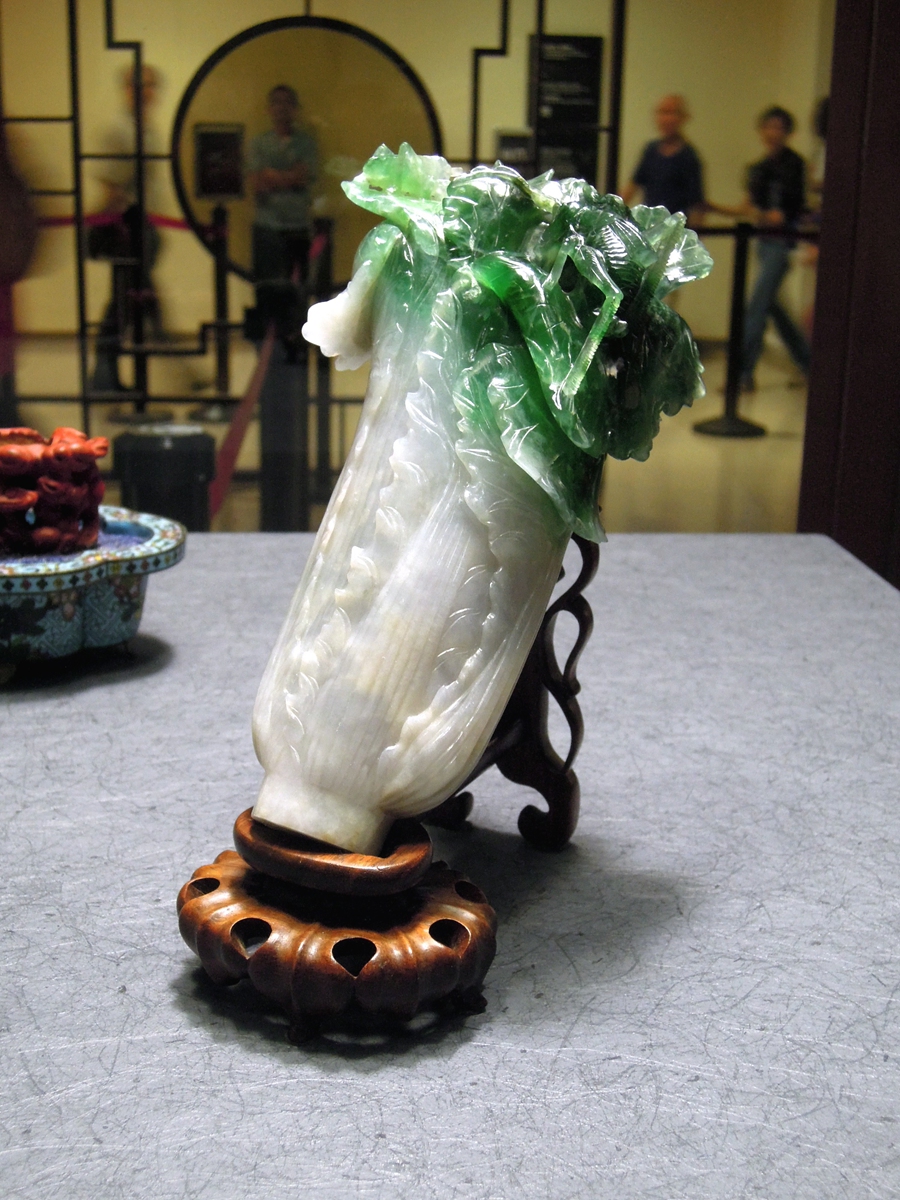
The famous Jadeite Cabbage on display at the Taipei Palace Museum. Photo: VCG
Recently, on China's Twitter-like social media platform Sina Weibo, the hashtag "How valuable are the relics at the Taipei Palace Museum" earned more than 126 million views.The Taipei Palace Museum was specifically built for the preservation of these relics, most of which were moved from the Palace Museum (Forbidden City) in Beijing and other institutions throughout the Chinese mainland during the War of Resistance against Japanese Aggression (1931-45) by the Kuomintang (KMT), when it retreated to the island after its defeat in the civil war in the late 1940s.
Among the predecessors of the Taipei Palace Museum, who managed to transport artifacts to Taiwan in 1949, many were patriots who escorted the relics to southwestern part of China to escape the warfare during 1931-1945, Fung noted. "They regarded cultural relics as their lives and always hoped that Chinese civilization will be passed on in Taiwan island from generation to generation."
As executive vice director of the museum, Fung also witnessed the "ice-breaking" exchanges between the Palace Museums that were made possible through the great efforts of then-director of the Taipei Palace Museum Chou Kung-shi and former head of Beijing's Palace Museum Zheng Xinmiao. In 2009, the "Harmony and Integrity: the Yongzheng Emperor and His Times" exhibition was held in Taipei and later the painting "Dwelling in the Fuchun Mountains," parts of which were originally in collections on both sides of the Taiwan Straits, were exhibited together at the Taipei Palace Museum in 2011.
During Fung's tenure as the director of the institute, there were close exchanges between the two Palace Museums in Beijing and Taipei. At that time, the exchanges of culture between the two sides of the Taiwan Straits also reached the highest level since 1949.
Fung also pointed out that after the launch of the "Three Direct Links" across the Taiwan Straits, the continuous increase in the number of visitors from the Chinese mainland helped further enhance the international reputation of the Taipei Palace Museum, Fung said.
"The Art Newspaper, a top UK art publication that selects the most popular museums and exhibitions in the world every year, had put The Taipei Palace Museum on the list for several years. It was the communications and exchanges between the two sides of the Taiwan Straits that made the Palace Museum in Taipei more popular worldwide," she said.
Fung pointed out that the exchanges in those years enhanced mutual understanding across the Taiwan Straits. "In my opinion, it is the same origin we share, and the inexistence of language and culture barriers between the people from the mainland and Taiwan island that made the exchanges so successful," Fung said.
Since the DPP took power in 2016, cross-Straits exchanges have been restricted by the authorities, which Fung believes has caused a great loss to the heritage and further development of Chinese culture in the Taiwan region.
After stepping down as the director of the Taipei Palace Museum, Fung became the director of the Fung Ming-chu Institute of Literature and History of Glorious Jewel Group, which aims to revive the Chinese history and cultural education that was deliberately removed by the DPP from school textbooks.
Fung said she is not alone. The education campaign was initiated by about 40 people in the cultural and educational fields, and now they have more than 300 members.
"Each one of them has contributed out of concern for the consequences of DPP authorities' de-sinicization attempts. But we firmly believe that the cultures on both sides of the Taiwan Straits come from the same root and we believe Taiwan island won't be separated from the Chinese mainland," she said.
